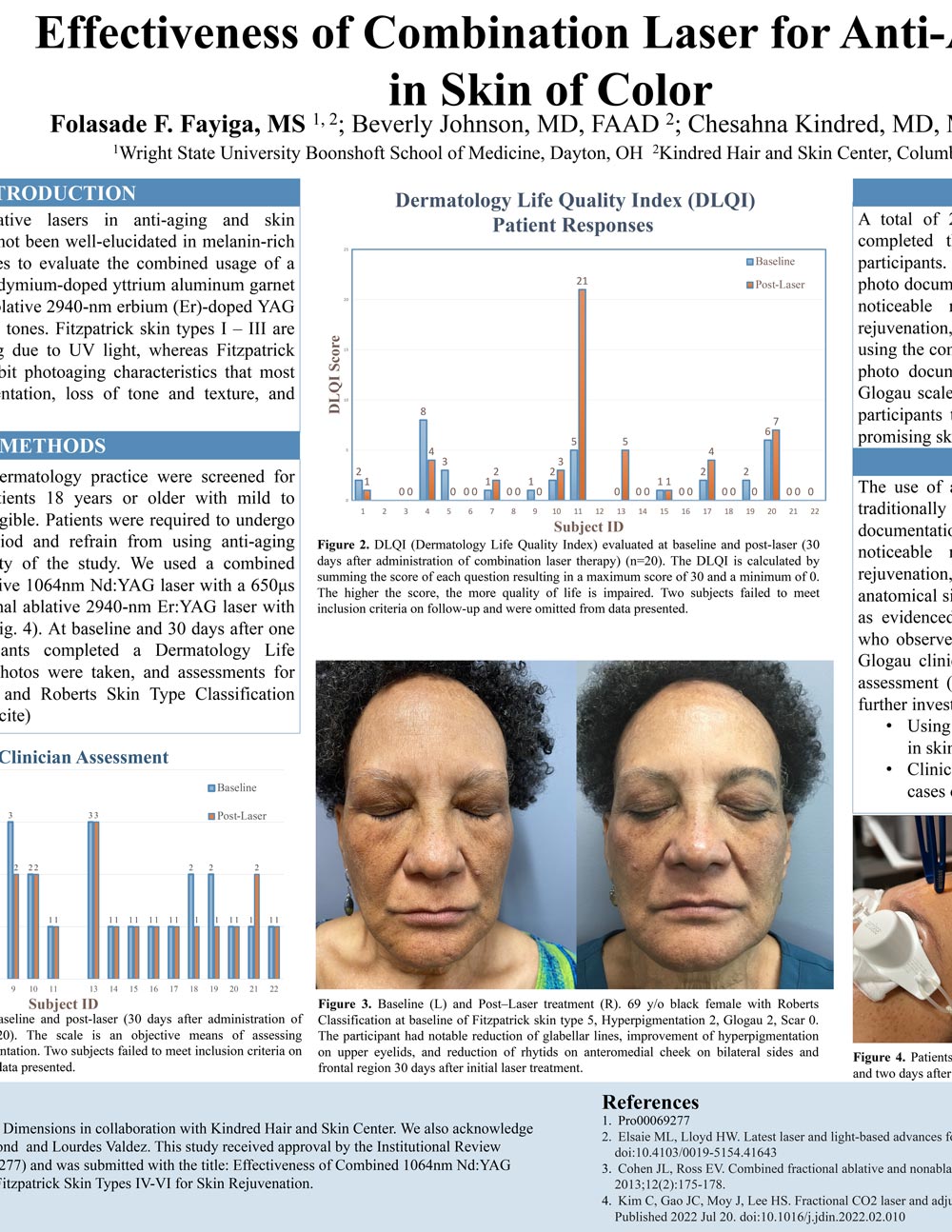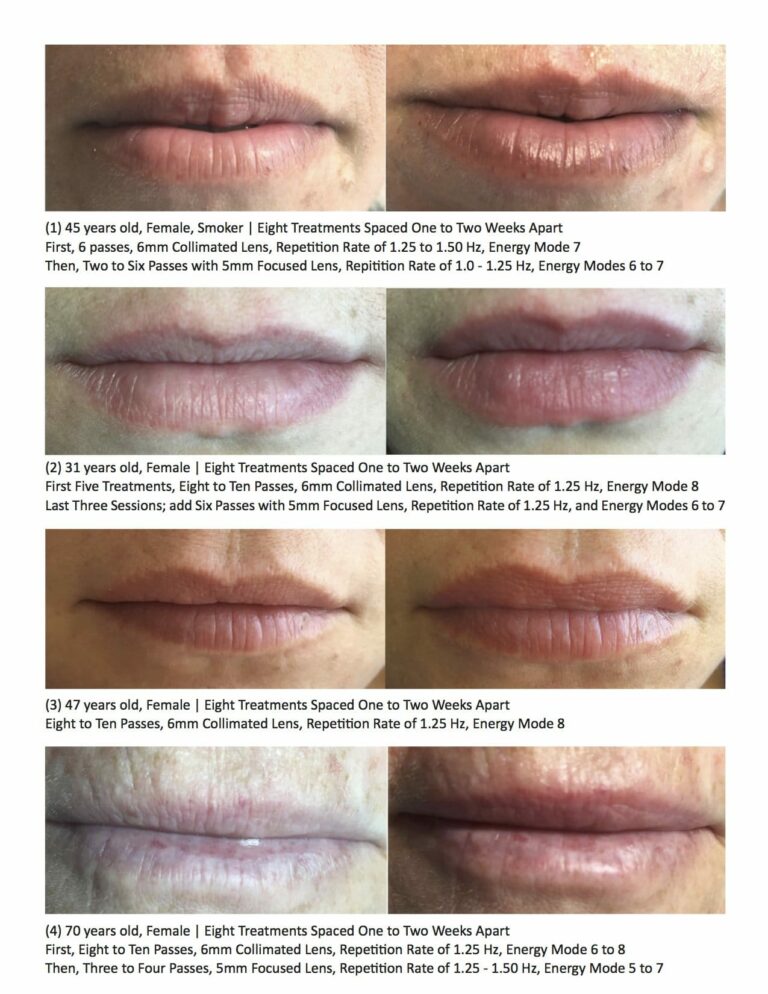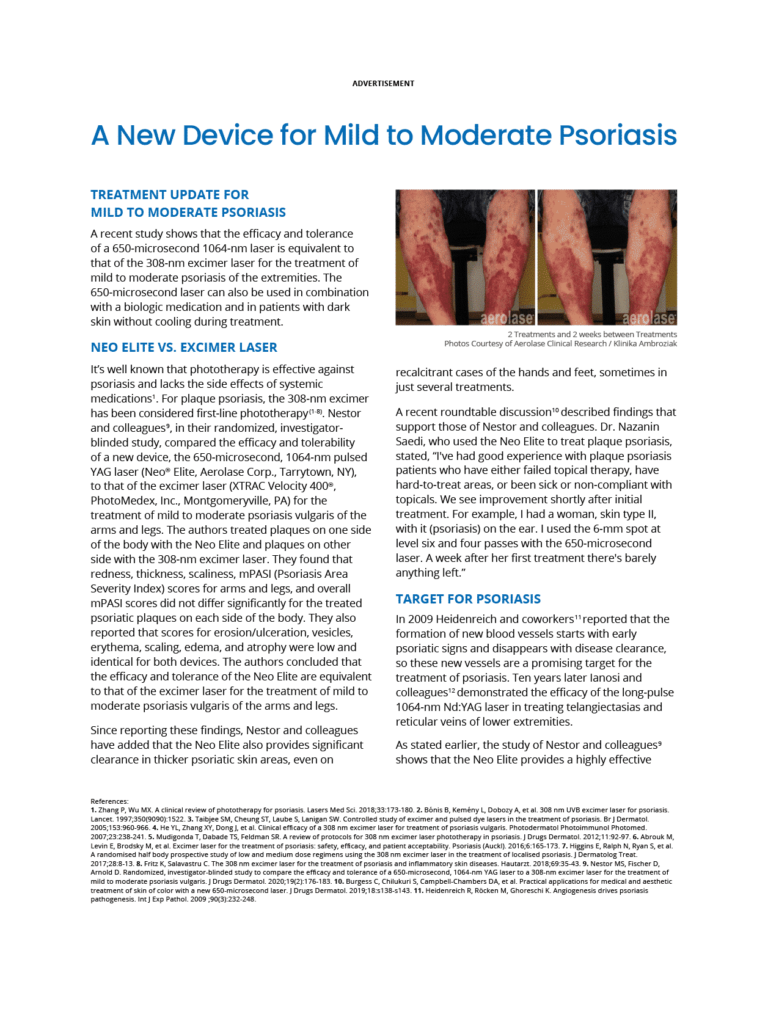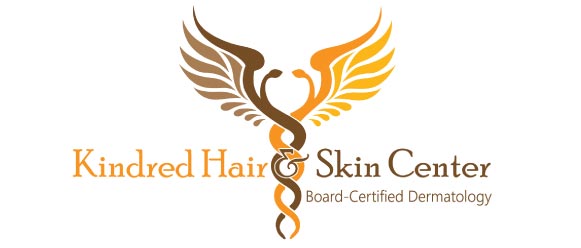


Folasade F. Fayiga, MS1, 2; Beverly Johnson, MD, FAAD2; Chesahna Kindred, MD, MBA, FAAD2
1Wright State University Boonshoft School of Medicine, Dayton, OH 2Kindred Hair and Skin Center, Columbia, MD
Introduction
The utilization of ablative lasers in anti-aging and skin rejuvenation therapy has not been well-elucidated in melanin-rich patients. This study serves to evaluate the combined usage of a non-ablative 1064nm neodymium-doped yttrium aluminum garnet (Nd:YAG) laser and an ablative 2940-nm erbium (Er)-doped YAG laser in melanin-rich skin tones. Fitzpatrick skin types I – III are more prone to skin-aging due to UV light, whereas Fitzpatrick skin type’s IV – VI exhibit photoaging characteristics that most often result in dyspigmentation, loss of tone and texture, and enlarged pores.
Methods
Patients from a single dermatology practice were screened for signs of skin aging. Patients 18 years or older with mild to moderate rhytids were eligible. Patients were required to undergo a three-day washout period and refrain from using anti-aging treatments for the entirety of the study. We used a combined procedure via a non-ablative 1064nm Nd:YAG laser with a 650μs pulse width and a fractional ablative 2940-nm Er:YAG laser with a 300μs pulse duration (Fig. 4). At baseline and 30 days after one laser treatment, participants completed a Dermatology Life Quality Index (DLQI), photos were taken, and assessments for aging via Glogau Scale and Roberts Skin Type Classification System were completed. (cite)
Glogau Clinician Assessment
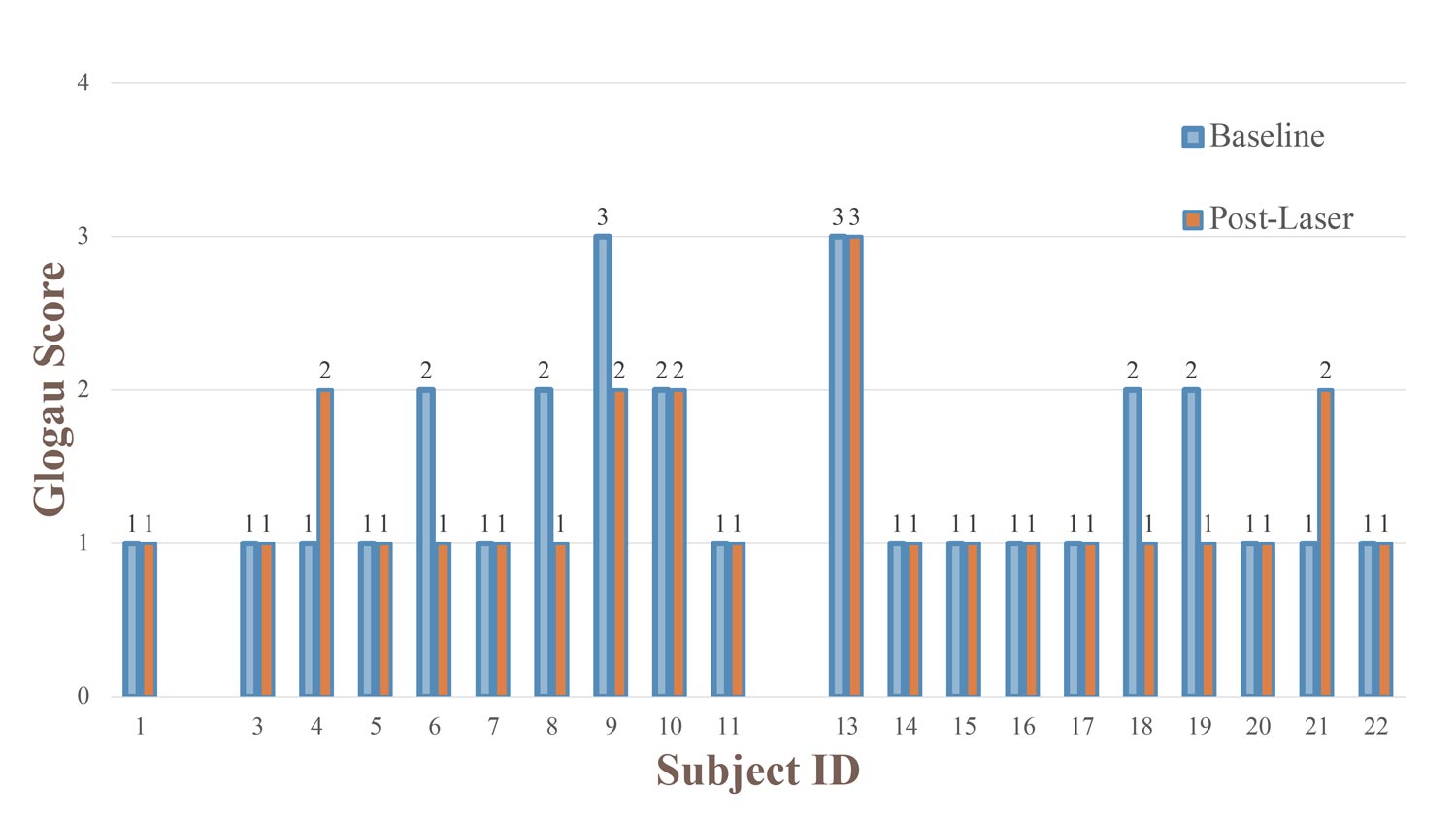
Dermatology Life Quality Index (DLQI)
Patient Responses
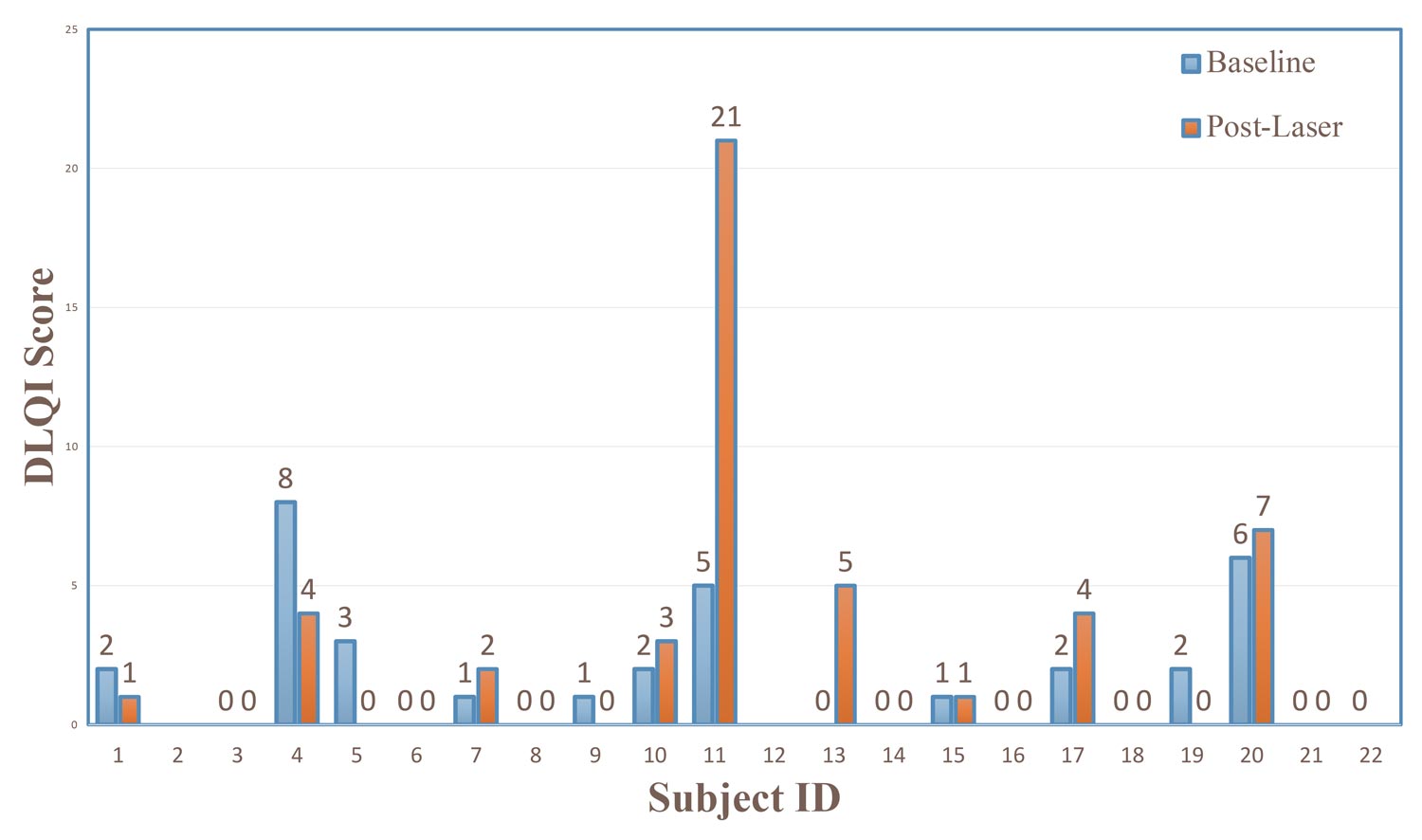
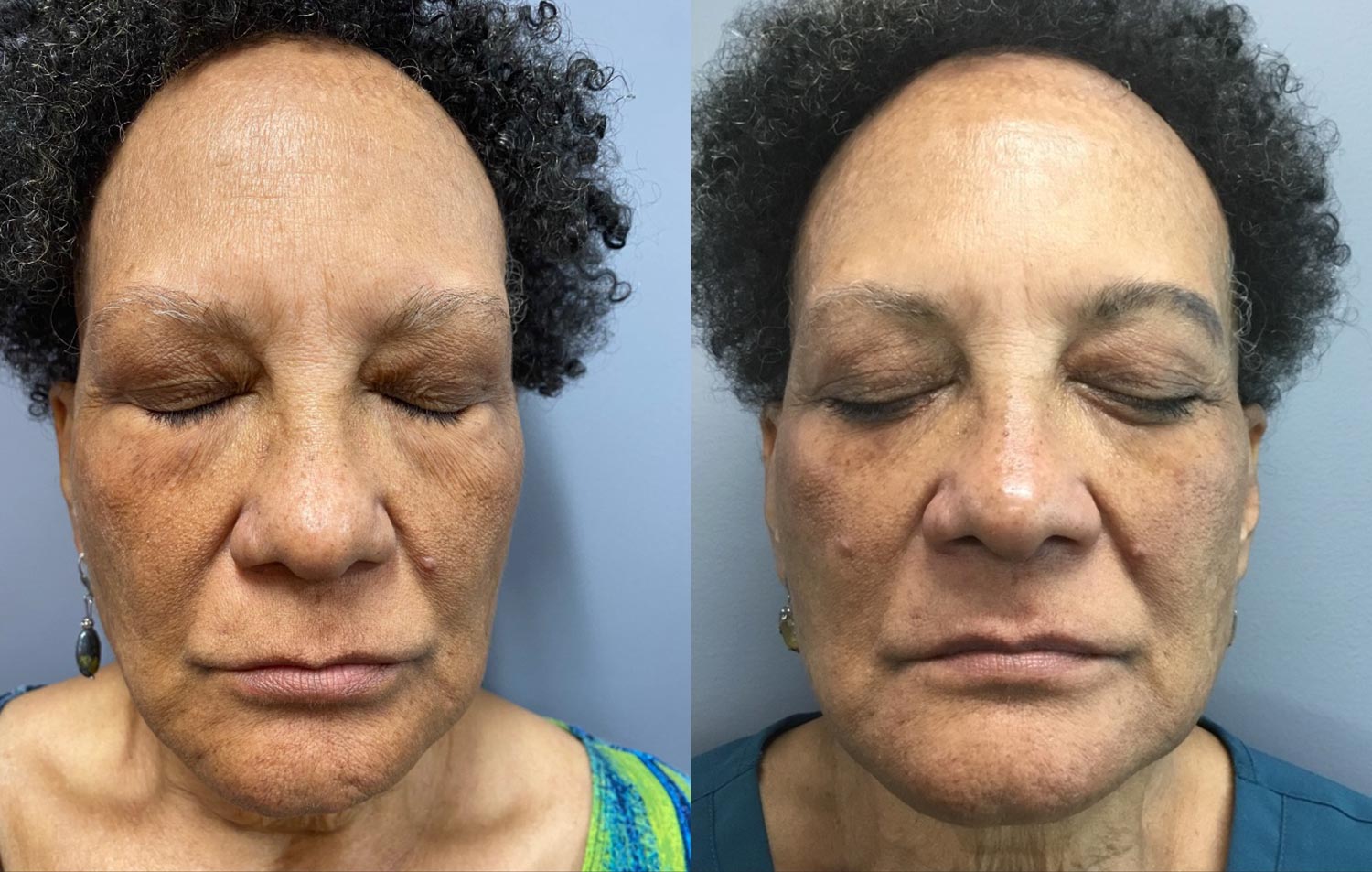
Results
A total of 23 participants were screened, and 20 individuals completed the study. There was one Latine and 19 Black participants. There were 5 males and 15 females total. Based on photo documentation, the participants successfully demonstrated a noticeable reduction in rhytid appearance, enhanced skin rejuvenation, and dyspigmentation. The treated anatomical sites using the combination laser showed improvement as evidenced by photo documentation. Greater than 50% of patients had a G1 Glogau scale at baseline and following laser. There were 25% of participants that had a decrease in their Glogau scale showing promising skin rejuvenation effects of the combination therapy.
Discussion
The use of ablative lasers in Fitzpatrick skin types IV – VI has traditionally been considered unsafe. Based on photo documentation, the participants successfully demonstrated a noticeable reduction in rhytid appearance, enhanced skin rejuvenation, and dyspigmentation (Fig. 3). The treated anatomical sites using the combination laser showed improvement as evidenced by photo documentation. The number of patients who observed a difference was higher when evaluated using the Glogau clinician-based scoring method compared to DLQI self-assessment (Fig.1, 2) The reason behind this outcome warrants further investigation. Future studies will consider:
- Using scales that are designed to encompass the variations in skin-aging seen across different populations.
- Clinicians may consider ablative lasers usage in refractory cases of dyspigmentation in darker skin types.
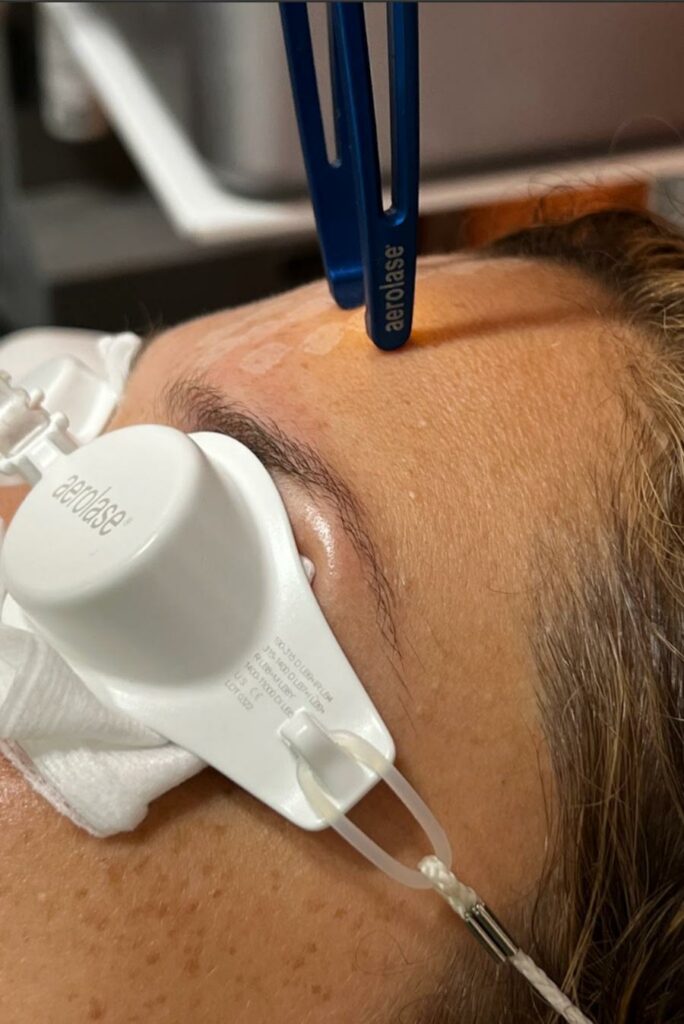
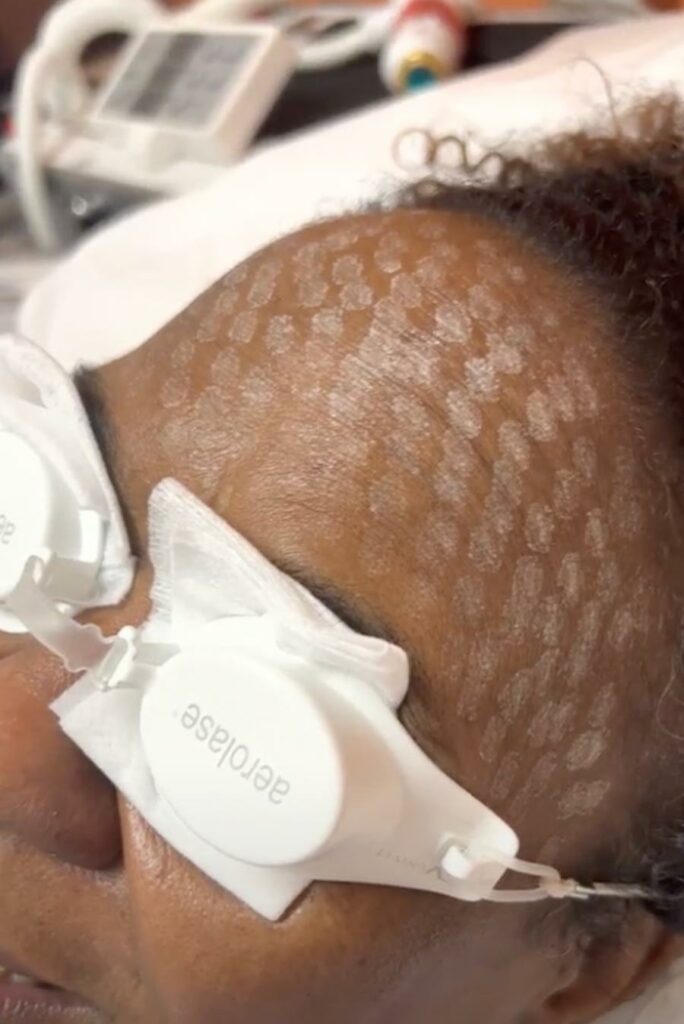
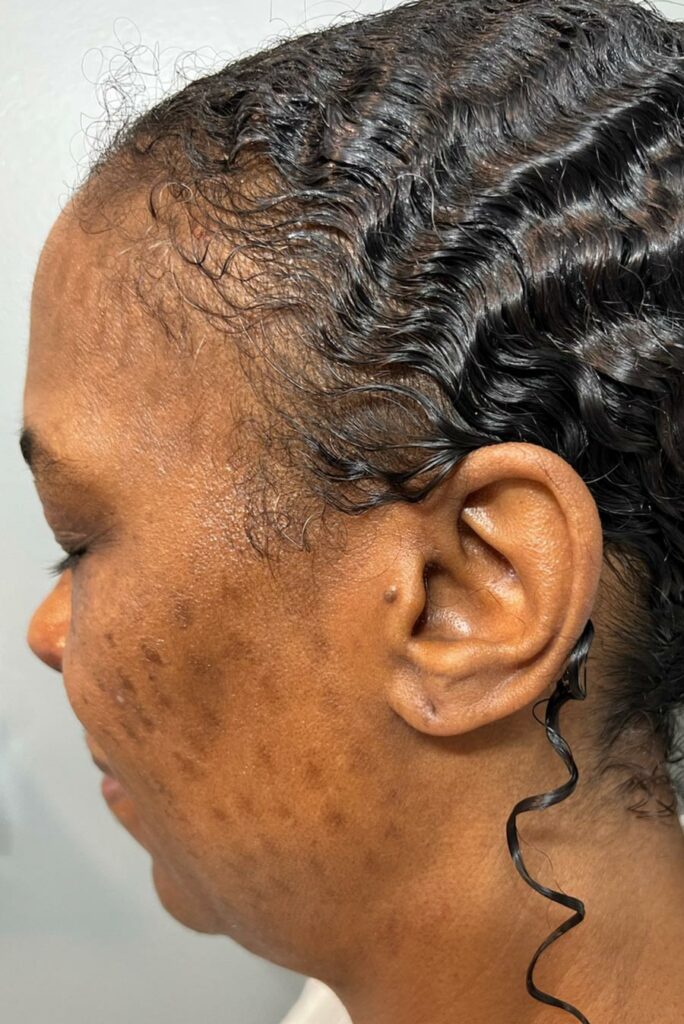
[Figure 4.] Patients undergoing ablative Er:YAG pictured during procedure, directly after, and two days after treatment.
Acknowledgements
We acknowledge the support of Nth Dimensions in collaboration with Kindred Hair and Skin Center. We also acknowledge the contributions of Adriana Richmond and Lourdes Valdez. This study received approval by the Institutional Review Board (Protocol Number: Pro00069277) and was submitted with the title: Effectiveness of Combined 1064nm Nd:YAG Laser & 2940nm Er:YAG Laser in Fitzpatrick Skin Types IV-VI for Skin Rejuvenation.
References
- Pro00069277
- Elsaie ML, Lloyd HW. Latest laser and light-based advances for ethnic skin rejuvenation. Indian J Dermatol. 2008;53(2):49-53. doi:10.4103/0019-5154.41643
- Cohen JL, Ross EV. Combined fractional ablative and nonablative laser resurfacing treatment: a split-face comparative study. J Drugs Dermatol. 2013;12(2):175-178.
- Kim C, Gao JC, Moy J, Lee HS. Fractional CO2 laser and adjunctive therapies in skin of color melasma patients. JAAD Int. 2022;8:118-123. Published 2022 Jul 20. doi:10.1016/j.jdin.2022.02.010

